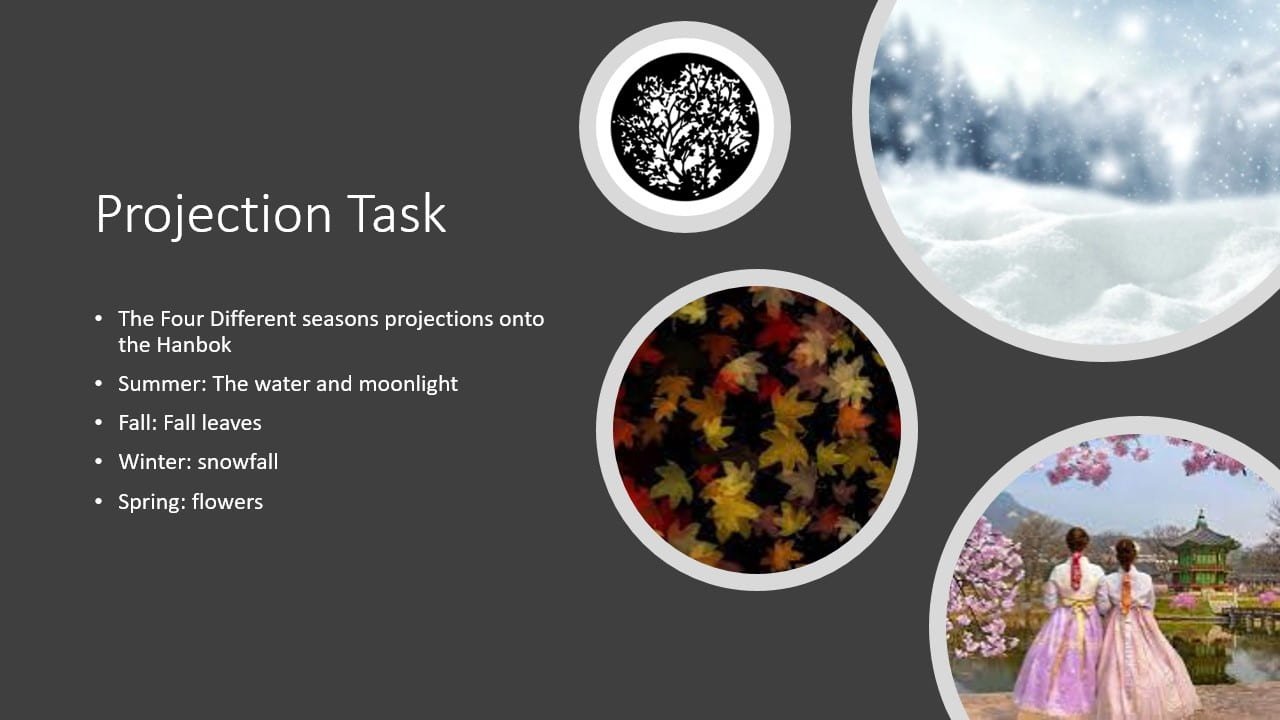The Sacrifice of Shim Chong
For our final ACCAD 6651 Digital and Physical Lighting group project we created a 360 projected presentation of the Korean classic story. I created the water simulation sequence as well as served as the narrator for the story.
360 Video of the performance. You can move around the video while it is playing by using your mouse.
Process
The assignment requirements included that the story must contain a journey and incorporated a haiku for inspiration:
The moon in the water;
Broken and broken again,
Still it is there
— Ueda Chōshū
(Trans. R. H. Blyth)
Below are images from the initial pitch presentation Emily Subr and I created before our first class. The group chose our pitch and we quickly moved forward with concept development.









The class enjoyed the idea and suggested removing the seasons and adding a giant red moon as a spherical composition. The project quickly transformed to the story of Shim Chong. The story follows Shim Chong as she throws herself into the sea as a sacrifice so that her blind father can regain his eyesight. Her sacrifice is rewarded as her father’s sight is returned and she is resurrected. A Harvard student is currently writing a musical for this story.
Our original layout was a wall and floor setup.
Emily went back and created a storyboard to include motion and symbols related to the story. When we eventually got to the script, we found that there are many different versions and each are long in length. We had to figure out important points to keep to address the overall story. It took many iterations in order to both work with the visuals, the pacing, and what the performers could perform.
I made a task sheet in Excel to help visually organize our roles for modeling.
We planned out the roles and assets we would need based on the story.
My role for 3D was the ocean simulation. I utilized Maya Mash. It was my first time using Mash but it was fairly simple to turn a cube into a water simulation. Rendering took quite some time. I planned out the water to have a start middle and end with the water rising to the top of the screen. This was done with a camera animation and animation of the base cube so that the water moved up slowly and could be animated.
Above Water
Water Rising
Under Water
During class on 4/8/2022 the class decided on a circular live performance using the scrims. This changed the plan for rendering quite a bit as sets would now need to be longer or designed in a way that it could be duplicated. I rendered out the sequence again but much wider.
Emily, who is studying Korean storytelling, said we would benefit from having a narrator as traditional Korean theater has a narrator visible on stage. I volunteered for the project, thinking it would be good practice for my public speaking. Emily also told me I would be wearing a traditional Hanbok. I was nervous about cultural appropriation but with further research the Korean government has supported the resurged interest in the clothing. The Hanbok is worn by tourists for free entry into the palaces and is an important part of the traditional performance. It is a beautiful dress that translates to mean ‘Korean clothing’ and is traditionally for women's hanbok consists of the jeogori (a blouse shirt or a jacket) and the chima (a full, wrap-around skirt). The ensemble is often known as 'chima jeogori'. The next major role for me was to practice my lines with Emily for the presentation and practice with the physical and digital lighting queues. Our performance technical script featured lighting queues was color coordinated various roles could all follow along from the same document.
Me behind the projection screen preparing for a performance. You can see the audience to screen right inside the screens and mountains projected onto the screens.
Emily performing the fan dance during the lotus sequence.








